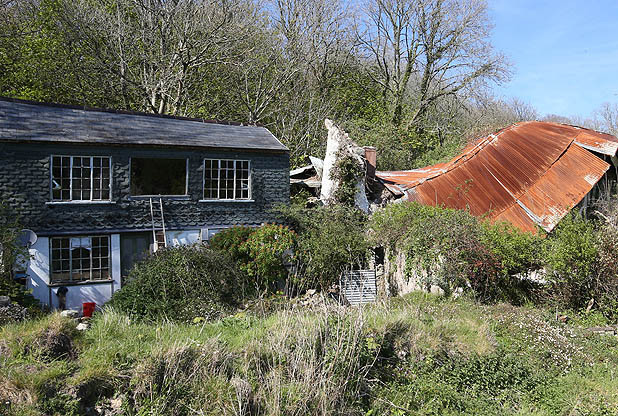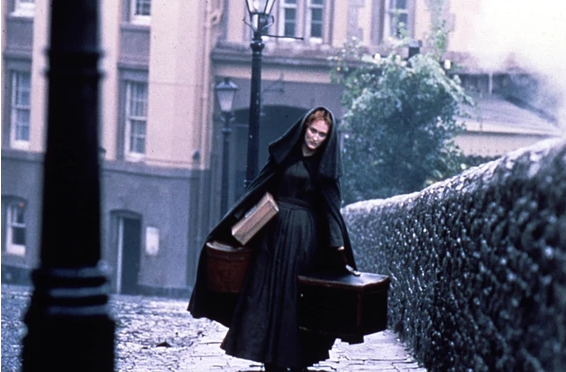Belmont House - Past Remains
 Belmont House is set high above the pretty little town of Lyme Regis on the Dorset coast.
Belmont House is set high above the pretty little town of Lyme Regis on the Dorset coast.
Belmont House was the seaside villa of Eleanor Coade, the eighteenth-century inventor of Coade stone, and later the home of renowned author John Fowles.
Built in 1777 the house is a fine, early example of a maritime villa.
Eleanor Coade owned the house from 1784.
In 1883 Belmont was bought by a GP, Dr Richard Bangay who transformed the villa into a large family home.
John Fowles and his wife Elizabeth moved to Lyme in 1965; they had bought the secluded Underhill Farm.

Like many other parts of Lyme Regis, the land his home was built on was vulnerable to landslips. When part of the garden fell into the sea he moved to an impressive Georgian property, Belmont House.
John Fowles bought Belmont House in 1968.
John Fowles moved into Underhill Farm in October 1965, and then to Belmont House in May 1969.
Here Fowles wrote The Ebony Tower (1974), Daniel Martin (1977), Mantissa (1982), A Maggot (1985) and The Tree (1992), Wormholes at Belmont.
The Landmark Trust purchased the property in 2007 from His widow Sarah, two years after the novelist’s death, aged 79.
The Landmark Trust plans to complete the uncovering of the original maritime villa, also keeping its observatory tower as an example of its type.
Mrs Sarah Fowles accused the charity of hypocrisy for using the novelist's name to raise funds after years of “writing him out of the story”.
She said: “They are raising an appeal on his name but they are pulling down the main part of the house he lived in.
Local historian Ken Gallop warned that visitors would not see the house as Fowles knew it.
"It's going to rack and ruin,” he said.

The house overlooks the famous Cobb in Lyme Regis, where Meryl Streep, who starred in the classic 1981 film adaptation of The French Lieutenant's Woman, was memorably pictured. John Fowles bought Belmont House just after he finished the book - The French Lieutenant's Woman, "I have offered £18,000 for Belmont House.".
'Its clothes were black...the figure stood motionless, staring, staring out to sea.' (John Fowles's The French Lieutenant's Woman)
 Elizabeth Fowles, John Fowles.
Elizabeth Fowles, John Fowles.
“Our life was Bohemian in the extreme; we had no clock, lived by desires; slept, ate, made love when we wanted. Took no exercise, went to parks, cinemas, read papers, argued, kissed, wrote letters. Neither E nor I have any time-sense, any morality about routines and conventions. On the whole for me a very happy time; a complex happiness; sex of course; she never tires me that way, never ceases, by simply being present, to seduce me; companionship being totally absorbed and absorbing somebody else…”
His love affair on the Greek Island of Spetses with Elizabeth, the married woman who would later become his first wife...having wooed her away from her first husband, a teacher, who was also his friend. Elizabeth had given up access to her only daughter to be with the man she adored.
John Fowles was born in Leigh-on-Sea, Essex.
Following his time in the Marines, which he despised,he went up, belatedly, to Oxford, where he studied French.
After graduating, he taught English at the University of Poitiers, where he made a discovery that would have a profound and enduring impact: the joy of
wildfowling (In British English, the term "hunting" is generally reserved for the pursuit of game on land with hounds, so the sport is generally known as "wildfowl shooting" or "wildfowling" rather than "hunting.") and, more generally, of being at one with nature. It was to dominate his life and much of his writing.
In 1951, Fowles went to teach at Anagyriou, a private boarding school on Spetsai, the Greek island that he has described as "a place that has always seemed to me to be near to Paradise". He was dismissed after 18 months - he was never in synch with another harsh regime - but the experience yielded the basis of what would be his second published novel, The Magus; and, more significantly, Elizabeth Whitton, who would be his muse and, for 34 years until her death in 1990, his wife.
His first novel, The Collector (1963), was a bestseller. His startling portrait of obsession with which, he said, he was "trying to show that our world is sick".
In 1965 The Magus was published, followed in 1969 by The French Lieutenant’s Woman.
The 1981 film version, with a screenplay by Harold Pinter, starring Meryl Streep and Jeremy Irons, was nominated for five Oscars.
Fowles hit the big time in the United States and swiftly discovered how international fame "
eats your soul and your heart out".
His only book of poetry, simply called Poems, came out in the USA, but not in the UK, in 1973.
John Fowles suffered a stroke in 1988 but he made sufficient recovery to carry on writing.
His first wife Elizabeth died in 1990 of cancer, only a week after it was diagnosed.
In 1998, Fowles married his second wife
Sarah Smith.
Fowles once said
if a novelist is to be a useful observer of society he must stand back from it and not become too active a participant. He has been true to his word, staying quietly in Lyme Regis, with Sarah.
There he curates the local museum, he copes with celebrity "
mainly by rejecting it".

The restored
Belmont House and garden
open to the public admission free.
The
2016 open days are February 13-14 and September 10-11.
On Friday afternoons from April to October there is an exhibition on Belmont’s residents in the former stables next door.

-
Belmont: from show-home to holiday home | Dorset Life - The Dorset Magazine
-
Corfu Blues: Belmont House, Lyme Regis, home of John Fowles
-
John Fowles' love letters to student sell for £25,000 - Telegraph :
John Fowles had a secret affair with a woman 43 years his junior.
Even setting aside the age difference, it was a highly unusual relationship, as a cache of letters written by the author, to be auctioned at Sotheby's. His lover, Elena van Lieshout, who was a 21-year-old Oxford undergraduate when the romance began, appears to have adopted the persona of Sarah Woodruff, the romantic heroine of Fowles's best known novel, The French Lieutenant's Woman.
The correspondence - some 120 letters and postcards, including several unpublished love poems - reveals that while the couple shared a bed, the romance was never fully consummated because Fowles, who was 64 at the time, had suffered a stroke. This was something Fowles bitterly regretted. He wrote: "It seems barbaric at times; that I've lost all sexual potency yet not sexual feeling."
This did not stop the pair role-playing, however. One letter reveals that a month after their first meeting, they re-enacted a scene from The French Lieutenant's Woman, standing in the same place where Fowles pictured Sarah Woodruff telling Charles Smithson, her admirer in the book, of her ruinous affair. The relationship lasted two years, but seems to have cooled when Fowles suggested marriage. They remained in touch until 1998 and then appear to have lost contact.
-
The 'real' French Lieutenant's Woman: John Fowles's doomed love affair with a 21-year-old Oxford student | Daily Mail Online:
"In May 1990, she arrived in Dorset to arrange a summer job as a waitress in the local Bell Cliff restaurant, taking a room nearby. There, the landlady told her that her hero had lost his wife to cancer barely two months previously.
Elena promptly wrote a letter of condolence to Fowles, adding that she was a great admirer of his who just happened to be staying in the area. She dropped it through the letter-box and waited. The lonely Fowles took the bait and sent a note by return, inviting her to visit next time she was in Lyme Regis.
As soon as her July holidays came around, Elena took up the invitation. By now, Fowles was feeling his bereavement even more keenly. In his diary he describes himself engulfed by waves of solitude 'blocking all present life out, crushing it like a roller'.
he may have been a crusty old widower, yet he had lost none of the romantic dreaminess of his youth. And so when Elena came to tea, it was the start of an unusual romantic relationship."










